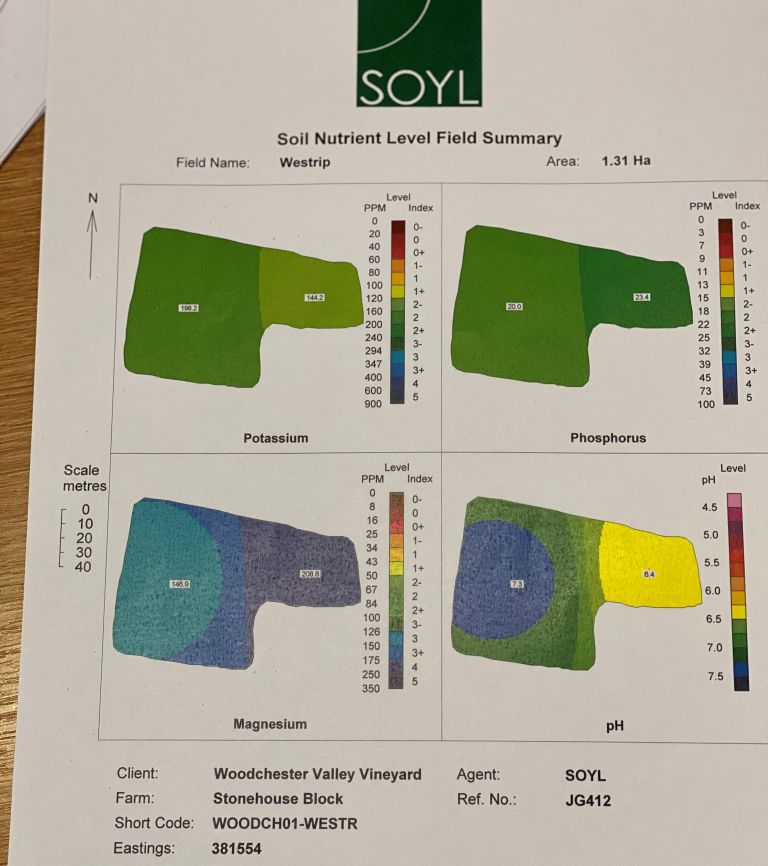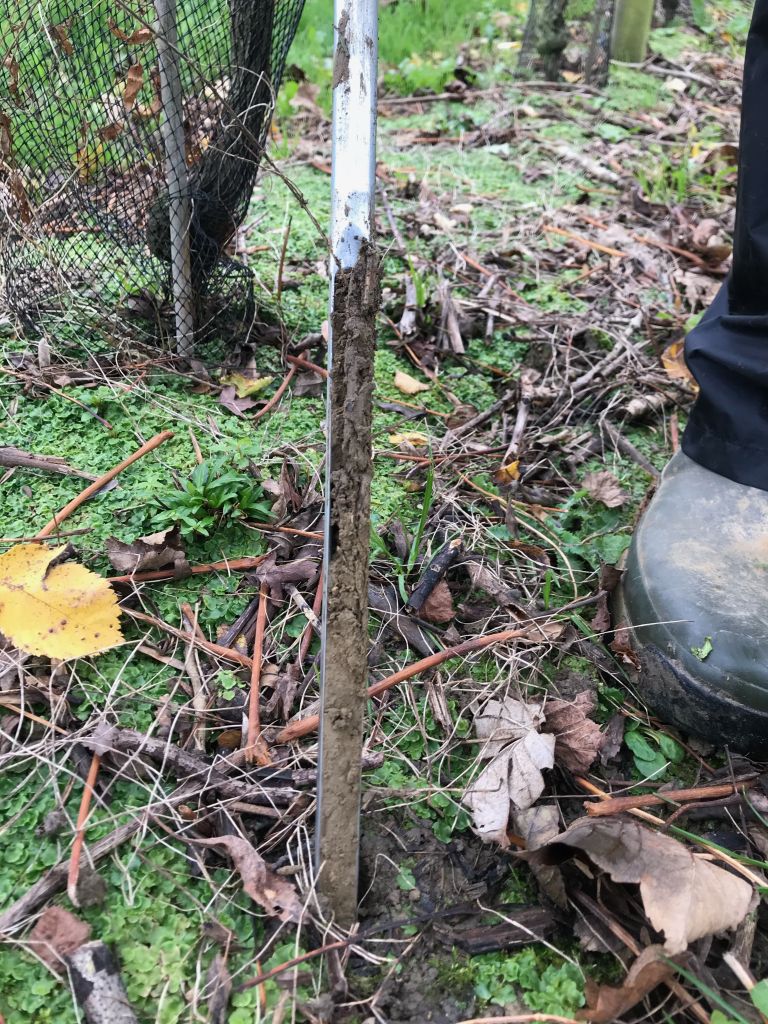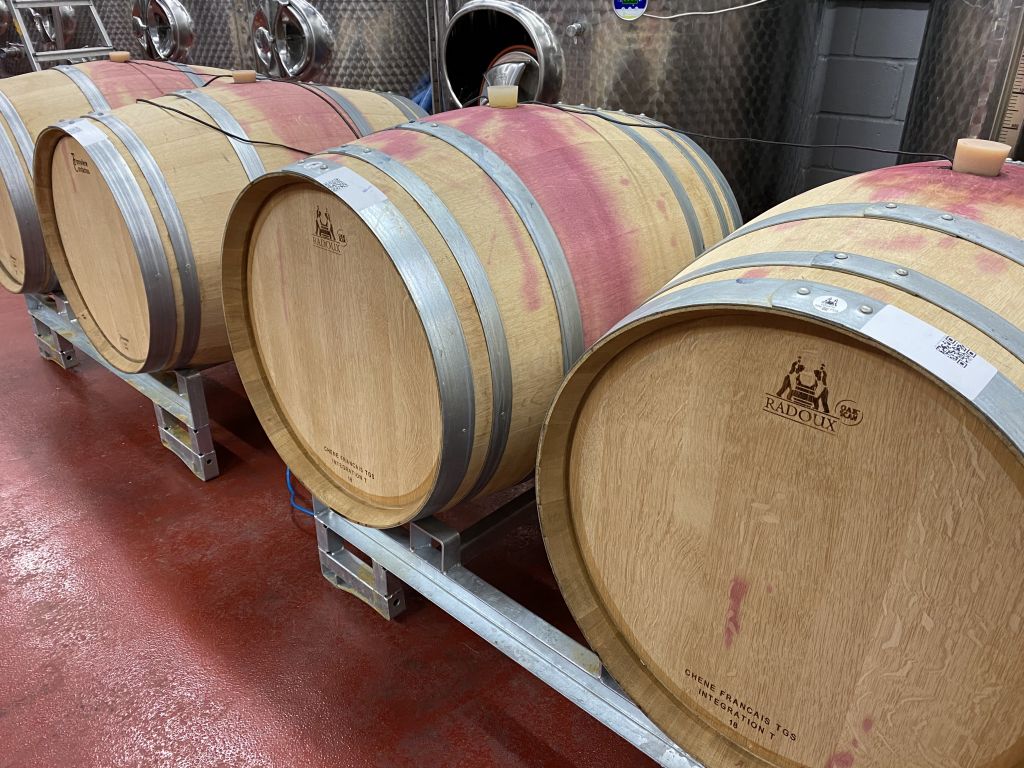Soil; The Dirty Work
Fiona Shiner, Founder
It may be the end of the growing season, but there is still plenty to do in the vineyard and this week we are completing the 2020 soil sampling of all three vineyard sites. Soil sampling should take place every three years with each field sampled separately. Between two and four samples per hectare are taken with each sample made up of 16 sub-samples. This will update us on the vineyards’ soil fertility and health after a number of years of grape production. Analysis includes macro and micro nutrient status of the vineyard soils by plot, soil texture, structure and organic matter content.
In this technical age, soil sampling is done with satellite precision and each sample is taken from a point that is mapped by GPS (Global Positioning System) for future reference. Unfortunately the satellite does not dig up the soil samples and the hard work has to be done manually which in a 56 acre vineyard can be quite thirsty work!

Nutrient Mapping

Soil Sampling

Malolactic fermentations in progress with temperature regulation probes
Malolactic Fermentations
Jeremy Mount, Winemaker
As the harvest fades into the distant past, the next phase of winery operations is in full swing. This is the malolactic fermentations; malolactic fermentation being the second fermentation of a wine. It doesn’t convert sugars to alcohol, but converts malic acid to lactic acid which softens the wine and brings more structure to the mid palate. This is used for most of the wines that are destined for our sparkling wines and also the Regent and Pinot Noir that is in barrel for the Atcombe Red.
The malolactic fermentation produces smaller amounts of CO2 to normal fermentation but the prickling on the surface of the wine is an indication that it’s started….to know when it has completed requires enzymatic analysis which is done in the lab here. If the malic level has dropped to below 0.2mg/l I know the tank or barrel group has successfully completed the ferment. It can then be topped up, stabilised and in the case of the wine in barrels, left to age for a year. Even though there were limited yields of the Pinot Noir this year the grapes were in excellent condition for red wine production so we’re looking forward to seeing how this wine evolves over 2021.




